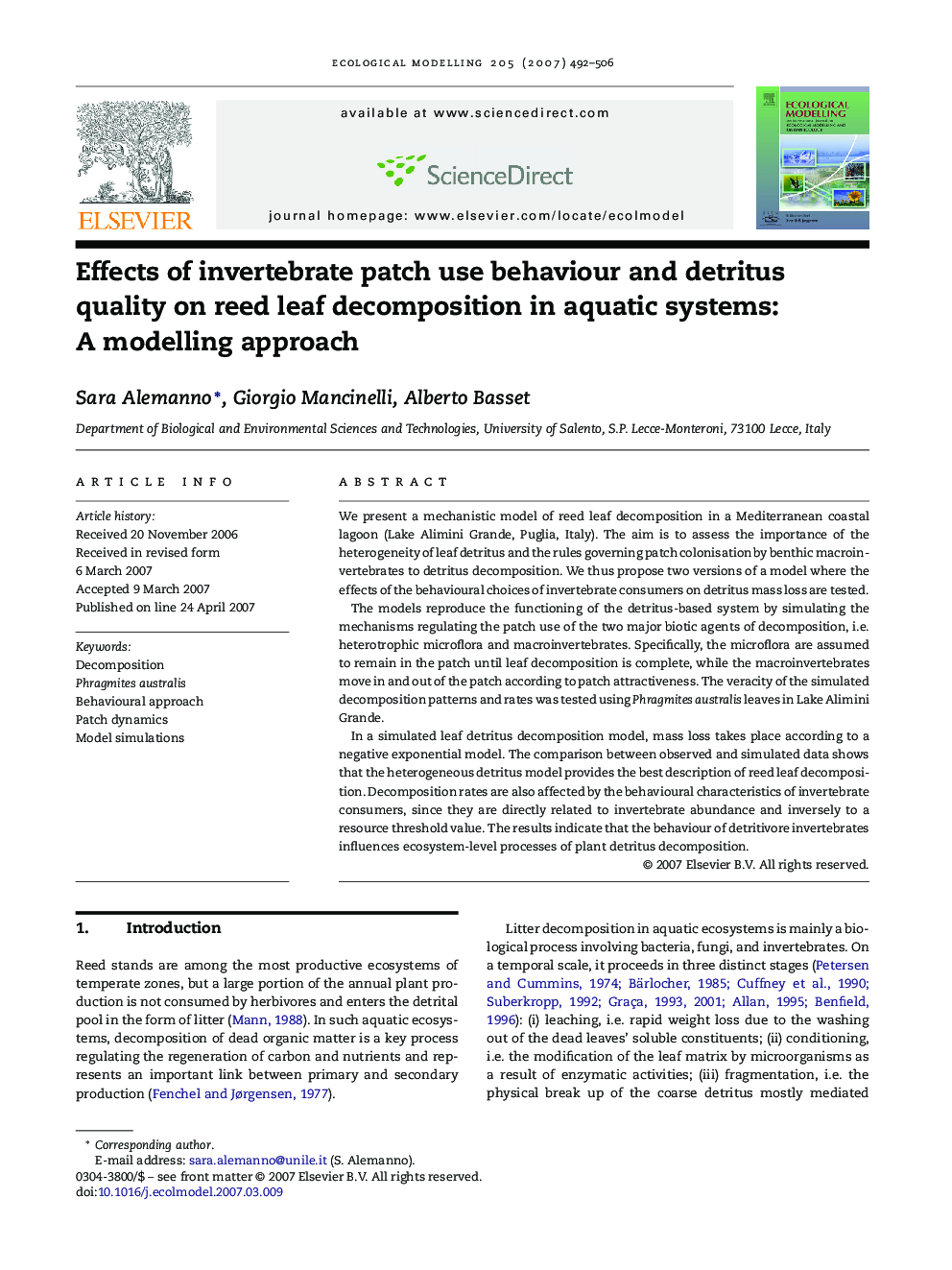| Article ID | Journal | Published Year | Pages | File Type |
|---|---|---|---|---|
| 4378766 | Ecological Modelling | 2007 | 15 Pages |
We present a mechanistic model of reed leaf decomposition in a Mediterranean coastal lagoon (Lake Alimini Grande, Puglia, Italy). The aim is to assess the importance of the heterogeneity of leaf detritus and the rules governing patch colonisation by benthic macroinvertebrates to detritus decomposition. We thus propose two versions of a model where the effects of the behavioural choices of invertebrate consumers on detritus mass loss are tested.The models reproduce the functioning of the detritus-based system by simulating the mechanisms regulating the patch use of the two major biotic agents of decomposition, i.e. heterotrophic microflora and macroinvertebrates. Specifically, the microflora are assumed to remain in the patch until leaf decomposition is complete, while the macroinvertebrates move in and out of the patch according to patch attractiveness. The veracity of the simulated decomposition patterns and rates was tested using Phragmites australis leaves in Lake Alimini Grande.In a simulated leaf detritus decomposition model, mass loss takes place according to a negative exponential model. The comparison between observed and simulated data shows that the heterogeneous detritus model provides the best description of reed leaf decomposition. Decomposition rates are also affected by the behavioural characteristics of invertebrate consumers, since they are directly related to invertebrate abundance and inversely to a resource threshold value. The results indicate that the behaviour of detritivore invertebrates influences ecosystem-level processes of plant detritus decomposition.
